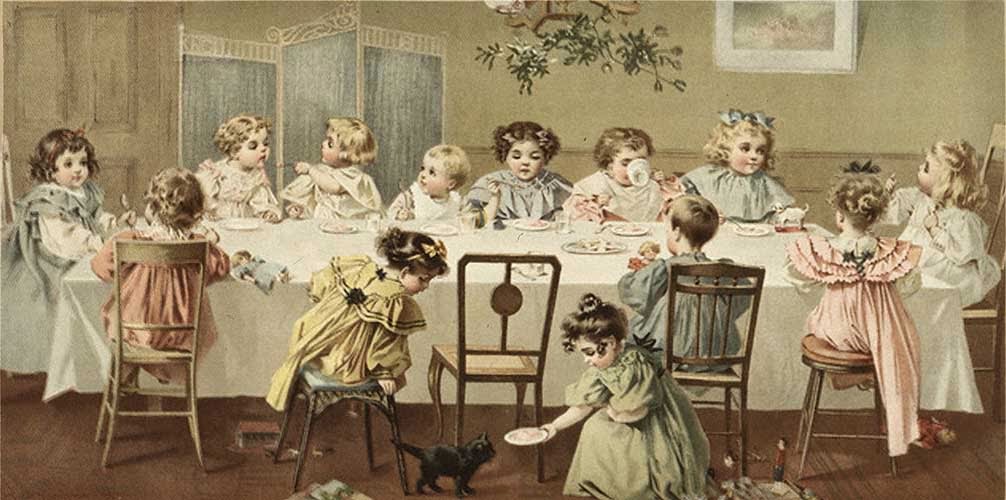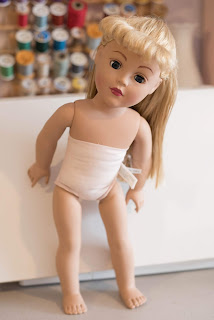I found this cutie at Goodwill this past week. I have always loved the Journey Girl faces. I think they are some of the prettiest dolls in the 18" catagory.
Plus, ever since Toys R Us went out of business, it's hard to say how long they will be in production. I know you can still buy them on Amazon, but for how long? So whenever I find one I snap it up and try to bring her back to her former glory. I'm a sucker for rehab projects. I know I spend way more time and effort than the doll is probably worth, but it's FUN. Especially when I get good results!
So, I didn't think this girl was going to need much help at all. Maybe just a trip to the hair salon and a pretty new dress. But then I was repositioning her arms and I heard a weird "click", and the next thing I knew, her arm was no longer connected to her body.
Poor Callie!
I have read a lot recently that the newer Journey Girls all seem to have this problem--joints that are stiff, hard to move, and easily broken. How disappointing for a young child this would be! So now my "easy" rehab suddenly became a little more difficult. But not to worry. I've restrung many a doll, so how hard could it be?
Hard. What the heck even is this kind of joint?!?
This is the part that was inside the arm. There used to be a peg attached that sort of swiveled and was attached to that weird contraption inside her shoulder cavity. I used a hair dryer to soften the vinyl for a few minutes and then popped it out.
This is the intact joint from the good arm. I decided to remove it too, since I didn't want to leave one arm with the potential of breaking in the future.
I don't have a picture of how I removed the weird plastic grid-like thing from the inside of her shoulder cavity. But I basically heated up the vinyl and pulled it out with some pliers. And then promptly threw it into the garbage.
But then I encountered this...the cavity is sealed up to the inside of her body! What?!? So in order to restring her the way I had planned, I would need to cut out the solid piece on both sides. I heated the vinyl again, and used my Xacto knife to cut out a sloppy circle from each side.
Close up:
Here you can look through to the other side:
So here is where I figured it would be easy. I would simply restring her like I have other dolls in the past, with my little wooden craft wheels, stringing cord, and brass sleeve crimpers.
Here I am, testing out to make sure the wooden wheel will fit inside the hole. It did.
Here's the other wheel, strung with cord and ready to be inserted inside of the arm.
It was at this point that I realized that my hands were too big too be able to fit into such a tiny space, so I figured I'd have to open up her back seam and come in through her body in order to tighten the cords and crimp them (like you would do with an American Girl doll. But guess what? Her shoulder plate is completely sealed off with solid plastic! That's right! You can open up her back seam and start pulling out the stuffing, but then you run into the solid vinyl of the bottom of her shoulder plate. Seriously?!? What were the makers of these dolls thinking? Could they have made it any more difficult?!? I think not.
But not one to give up easily (my husband says I may be just a little bit stubborn!), I started thinking of another way I could reattach her arms. And then it came to me...use some sort of discs where I could run a single piece of cord from one arm, through the body, through the other arm, and back to the first arm where I would tie it off. Just like I do with most of my antique doll restorations. But what could I use for the disc?
Buttons!
But not just any buttons...I came to the conclusion that they needed to be shank-style buttons with a large enough hole so that my stringing cord could fit through the shank with ease. So off to JoAnn's I went.
I determined that they need to be about a 1 1/8" in diameter in order to fit nicely in the arm hole. But not all of the buttons I found in that size had shanks with a big enough hole to accommodate my stringing cord. Then I happened across these clock buttons. $5 for a pack of 8, but with my 50% off coupon, they were only $2.50! So a little over 31 cents apiece. Not bad! But would they work like I had envisioned?
Once again I used my trusty blow dryer to heat the vinyl. Then I shoved the button, shank side up with cord already strung through, into the arm.
I pulled the cord ends through the body with my hemostat, strung one end onto another button, and shoved that button into the other arm.
Next, I tied both ends of cord together and pulled them as tight as I could. I tied them in a triple knot and shoved the cord ends inside the body.
And voila! Callie has arms again! And they work!
They hold position perfectly. Which begs the question...why couldn't the manufacturers of these dolls joint them this way in the first place?!? Save all that plastic? Ah, well. All's well that ends well! Or something like that. And I feel proud and satisfied that I wa
s able to figure out another doll repair dilemma. My great hope is that this might help out others who find themselves in the same situation. So now she just needs a new dress and she'll be ready to go on to a new home!
In case you read my last post about the vintage Cissy doll I found, this is a rather disgusting picture of the black-ish water in the tub AFTER I rinsed her clothes in Oxy Clean all night. Gross, right? I can't believe how much dirt came out of her dress.
Before soaking it, I ran a basting thread all around the top of her skirt in order to keep all of the tiny pleats in place. I didn't want them coming out in the wash and then have to try ironing them all back in! Just in case you've forgotten, this is what her dress looked like before I washed it:


And here it is after! It definitely looks much cleaner and fresher while standing up on a towel to dry. I did notice that the tulle netting of this dress has some rips and chunks missing from along the hemline, but since it is such a full dress, it is not easily noticeable. Now I'm trying to decide what I want to do about that...do I just leave it alone, or do I try to repair it somehow? Is it even possible to find a tulle netting in the same shade and weight? If so, I could make a ruffle and gather it to the lower portion of the skirt, disguising the problems underneath. I just don't know. I will leave it alone for now. Currently, Cissy has her darkened arm slathered up in 10% benzoyl peroxide zit cream and is lying under my bedside lamp, in hopes of lightening up her vinyl. I will also look for a make-up brush with some soft bristles in the same color as her eyelashes so I can replace the missing ones on her right eye. I'll keep you posted on my progress!




























